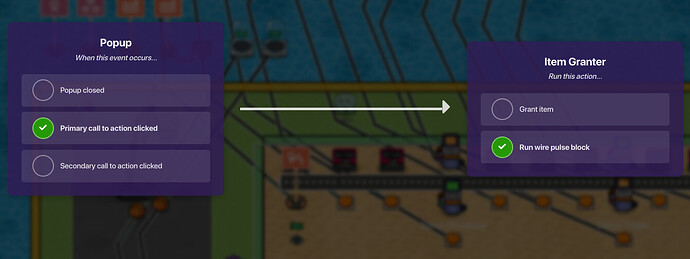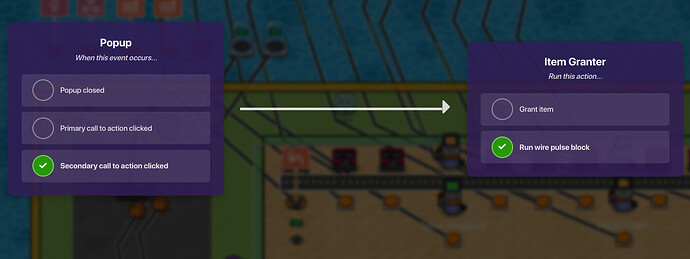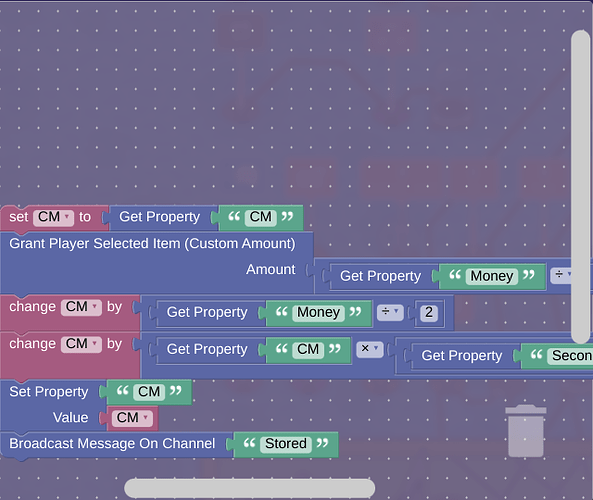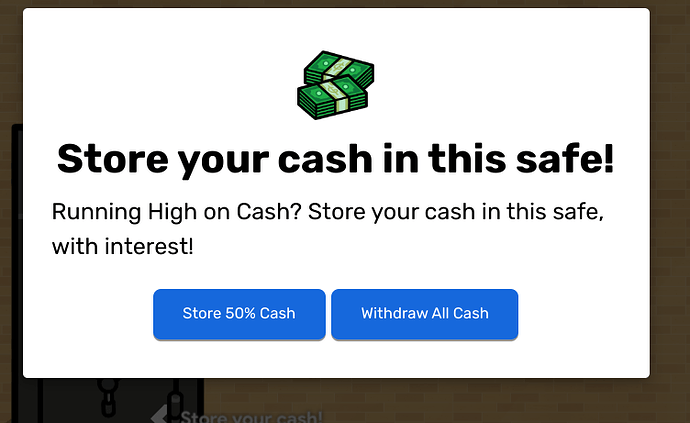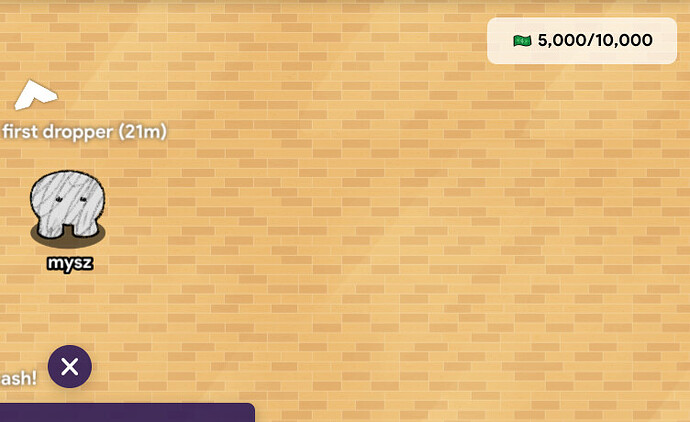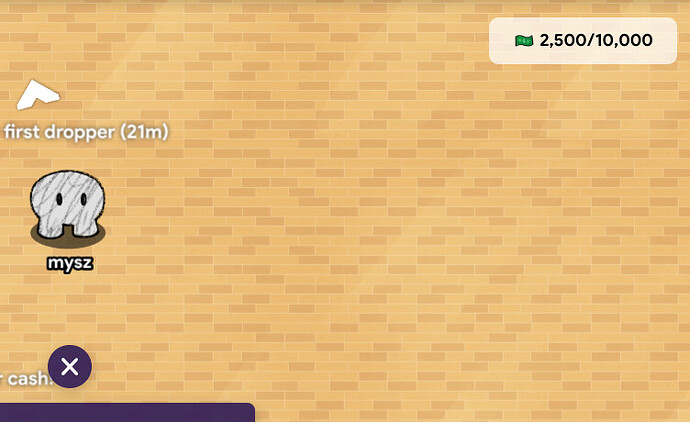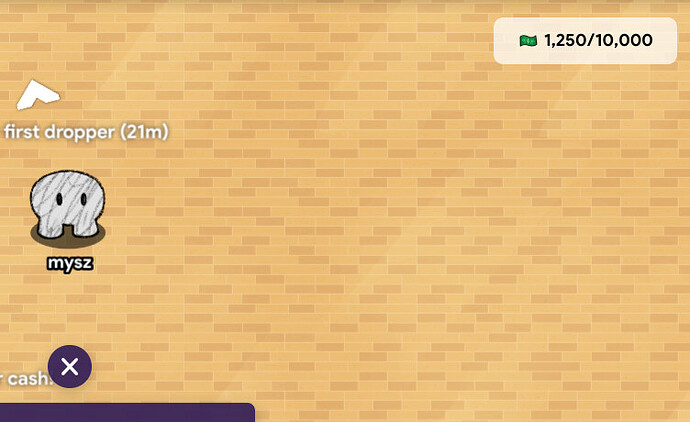While I was creating my Tycoon Game in Gimkit, I wanted to create a bank system that allowed players to deposit 50% of their cash, but be able to withdraw it later, with an extra 1% bonus. You can do this, which is pretty surprising to me.
What you’ll need for this tutorial:
Item Granter x2
Property x3
Random Prop(Preferably “Safe”) x1
Button x1
Popup x1
Counter x1
Repeater x1
Inventory Item Manager x1
Step 1
First, place down a prop, and near a prop place a button. Make the button say something like “Open the Bank Menu” or something.
Then, wire it to a popup.
This is what your result should look like:
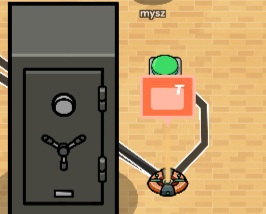
Step 2:
Create a call to action label that says “Store x% of your [insert currency]”, with x being any percentage and [insert currency] being any currency.
Now create a secondary call to action label that says "Withdraw your [insert currency]'.
Wire the popup to two item granters. The wires should look like this:
Step 3
Now, place down three properties.
Property 1: “Money”
Property 2: “CM”(Abbreviated for “Current Money”)
Property 3: “Seconds”
Place down an inventory item manager. Make it track whatever item you want. Now, go to blocks and pick the block “When amount of item changes…”. Place these blocks down.
Step 4
Place down a repeater and a counter. Make the repeater repeat every [insert number] seconds. Make it start when receiving “Stored”(We’ll get to that later). Anyways, after that, wire it to a counter so that when the repeater repeats increment the counter by 1. Also, make the counter reset after receiving on channel “Withdrawn”(We’ll also get to that later). It should look like this:

Step 5
Change the item granter that stores your currency so it gives whatever item you want it to give, and 0 of that item. Then, create a block that says “On wire pulse…”.
Next, create a variable named “CM” and place down these blocks.
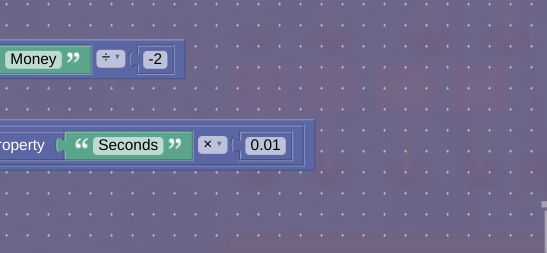
Step 6
For the next item granter, do the same thing, except place these blocks:
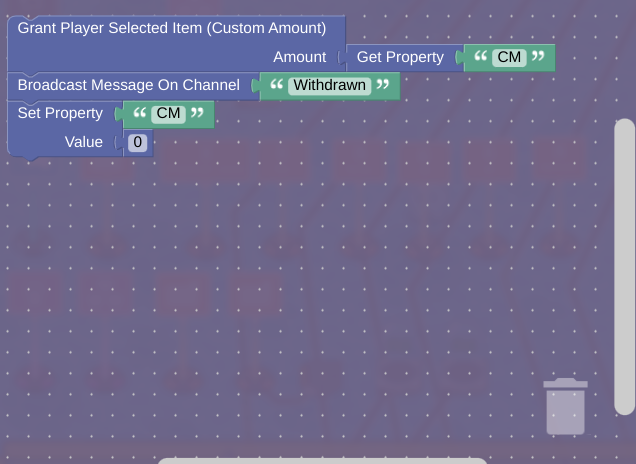
Explanations:
In Step 5, we need to use the property named “CM” because it represents how much currency stored in the bank, and when you withdraw that currency, it doesn’t just give you 50% of your current currency.
The seconds thing in step 5 is to give interest! When the counter increments, the amount of percentage of the currency you originally had goes up, making you earn more cash! This is an incentive for a bank- Being able to make cash. Plus, if you have the maximum amount of an item, you can also store stuff.
Optional Challenge: This concept uses simple interest. If you want, show me this system, but using compound interest.
Additional Images:
The Bank Menu
5,000 Cash
First Store
Second Store
Cash Withdrawl- With interest!
Anyways, this was the longest tutorial yet. What difficulty should this tutorial be?
- 1/5
- 1.5/5
- 2/5
- 2.5/5
- 3/5
- 3.5/5
- 4/5
- 4.5/5
- 5/5
DONUT TYCOON ON TOP!
